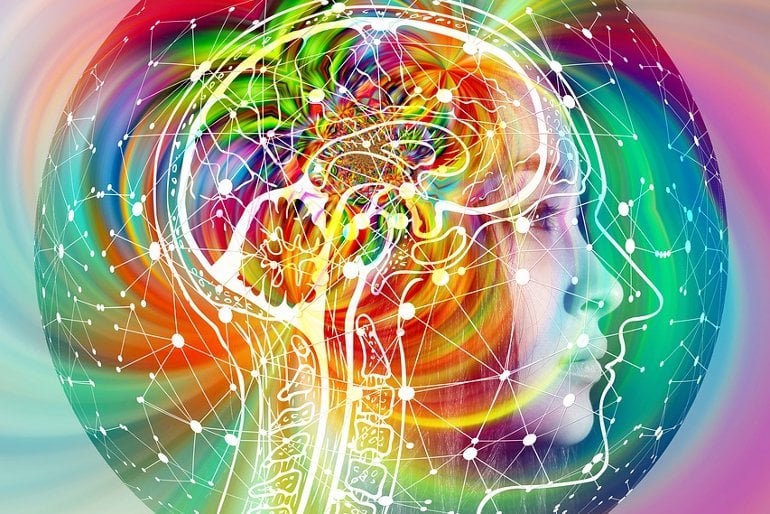Summary: Study reveals functional connectivity abnormalities in brain areas associated with reward processing, habit formation, and decision-making in those with substance use disorders and addiction.
Source: University of Montreal
Some 10% to 15% of people will have a substance abuse problem at some point in their life, making it one of the most common psychiatric disorders.
Risks associated with substance abuse include dangerous driving, missed work, problems with depression, anxiety, health and money problems. Yet people with addictions seem to experience a sort of myopia, getting in deeper and deeper to cope with unpleasant emotions and to feel good, regardless of the cost.
Research has clearly established that psychosocial and environmental factors play a role in the development of substance abuse disorders. But there is more to the story, and now functional magnetic resonance imaging (MRI) studies are highlighting the importance of biological factors, in particular how the brain functions.
“The influence of such factors can be as much as 50%—this astonishingly high figure is why we’re so interested in what’s going on in the brains of substance abusers,” explained Stéphane Potvin, a professor in Université de Montréal’s Department of Psychiatry and Addiction whose research focuses primarily on the harmful effects of cannabis and alcohol on the brain structures of people with schizophrenia.
Zeroing in on markers
Potvin, who coordinates the Neurobiology and Mental Health division of the Centre de recherche de l’Institut universitaire en santé mentale de Montréal, wanted to zero in on the neurobiological markers associated with addiction. With his student Jules R. Dugré, a Ph.D. candidate in biomedical sciences, he conducted a meta-analysis of 96 studies involving a total of 5,757 subjects with some form of substance dependence—alcohol, nicotine, cannabis, psychostimulants or another drug.
Rather than focusing on brain activity as a whole, in his analysis Potvin and Dugré looked at what is known as “functional connectivity,” in other words, how well different parts of the brain communicate with each other. This is the first time an analysis of this type has been done.
Published in November in Addiction Biology, the study reveals a number of anomalies in the brain’s reward, decision-making and habit formation systems:
1. Reward
“The brains of substance abusers tend to show hyperconnectivity between the ventromedial prefrontal cortex and ventral striatum, two key areas of the reward system,” said Potvin. “This could explain the tendency to choose immediate gratification and why the substance’s motivational value increases over time despite the negative impact on other spheres of life.”
2. Decision-making
“We also see reduced connectivity in certain brain areas involved in decision-making, such as the prefrontal cortex and amygdala,” added Potvin. “This is consistent with the fact that substance abusers can seem indifferent to the harmful consequences of their choices.”
3. Habit formation
The most original finding is the presence of anomalies in the brain regions associated with habit formation, including the dorsal striatum and premotor cortex. “This hyperconnectivity could explain the compulsive nature of substance abuse,” Potvin noted.
No charges in impulse control
The meta-analysis did not, however, show changes in the brain regions and networks associated with impulse control. This contrasts with previous studies, which showed abnormalities in these regions using other neuroimaging approaches.

Potvin is quick to point out the limitations of his study. “In our analysis, we included all relevant studies of substance abusers, whatever the substance. But are brain systems equally affected by different substances? We really don’t know.”
Ultimately, these findings will help guide the development of neuromodulation-based interventions in the field of addiction.
“First we need a better understanding of the brain systems involved in substance abuse,” said Potvin. “This will allow us to pinpoint the areas to stimulate or inhibit in order to rebalance the brain and change behavior. The more solid evidence we have, the more treatment centers will be motivated to invest in the equipment needed to carry out this type of intervention.”
About this addiction and neuroscience research news
Author: Mylène Tremblay
Source: University of Montreal
Contact: Mylène Tremblay – University of Montreal
Image: The image is in the public domain
Original Research: Closed access.
“Disrupted functional connectivity of the brain reward system in substance use problems: A meta‐analysis of functional neuroimaging studies” by Jules R. Dugré et al. Addiction Biology
Abstract
Disrupted functional connectivity of the brain reward system in substance use problems: A meta‐analysis of functional neuroimaging studies
Extensive literature suggests that the brain reward system is crucial in understanding the neurobiology of substance use disorders. However, evidence of reliable deficits in functional connectivity across studies on substance use problems remains limited.
Therefore, a voxel-wise seed-based meta-analysis using brain regions of the reward system as seeds of interest was conducted on 96 studies representing 5757 subjects with substance use problems. The ventromedial prefrontal cortex exhibited hyperconnectivity with the ventral striatum and hypoconnectivity with the amygdala and hippocampus.
The executive striatum showed hyperconnectivity with the motor thalamus and dorsolateral prefrontal cortex and hypoconnectivity with the anterior cingulate cortex and anterior insula.
Finally, the limbic striatum was found to be hyperconnected to the orbitofrontal cortex and hypoconnected to the precuneus compared with healthy subjects.
The current study provided meta-analytical evidence of deficient functional connectivity between brain regions of the reward system and cortico-striato-thalamocortical loops in addiction.
These results are consistent with deficits in motivation and habit formation occurring in addiction, and they highlight alterations in brain regions involved in socio-emotional processing and attention salience.






